VMZINC and LEED
Sustainable development benchmark developed by the USA and used in numerous countries
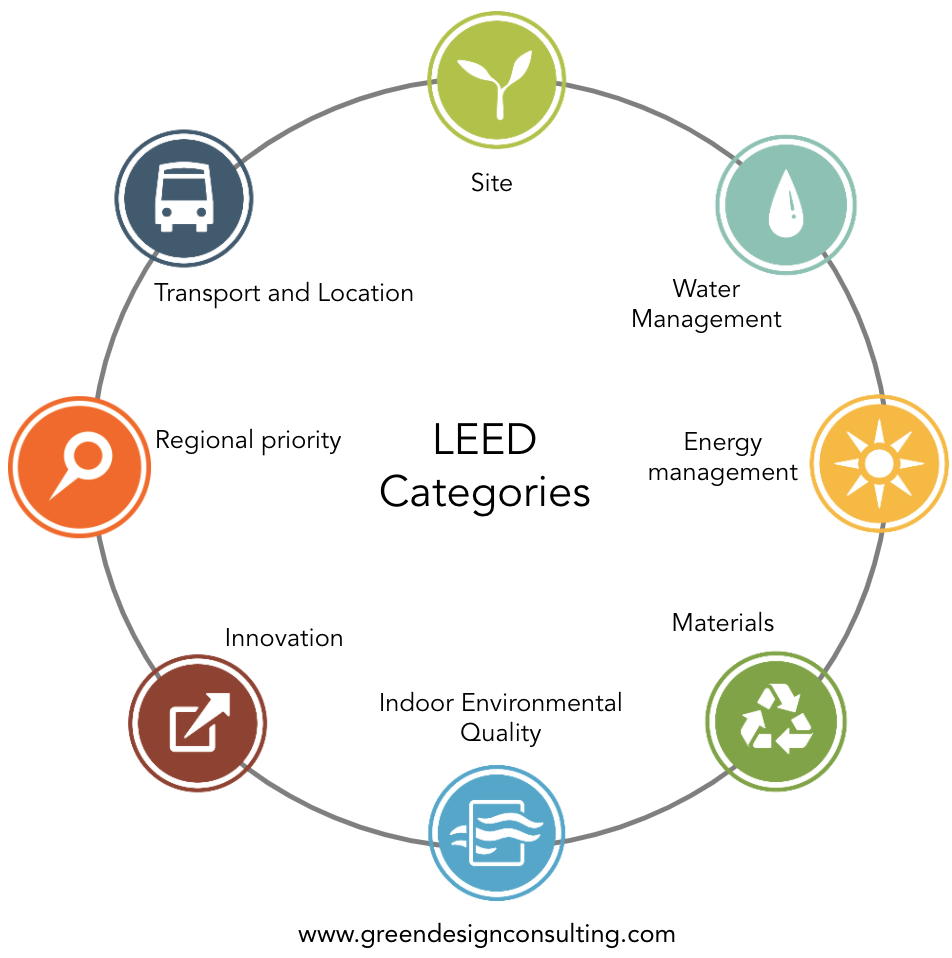
The LEED method
This sustainable building programme aims to recognize and highlight buildings that consume the lowest quantity of energy and that are most respectful of the environment. It can lead to 4 levels of certification:
- Certified: 40 points
- Silver: 50 points
- Gold: 60 points
- Platinum: 80 points.
It is organized in 8 categories of criteria.
Source: https://www.greendesignconsulting.com/single-post/leed-practical-guide
VMZINC and the LEED® system
Sustainable, recyclable, featuring significant levels of recycled materials, Environmental Product Declarations, etc., VMZINC systems offer many advantages that enable them to contribute to obtaining LEED® certification for the building in which they are used.
Used for building envelope applications or, more rarely, as an interior solution, VMZINC solutions mainly contribute to 4 LEED® categories of criteria:
LEED® V.4 criteria VMZINC advantages Accessible point Ecological site management (SS) Extent of SRI possibilities according to designers' requirements (Azengar SRI > 35) 2 Materials and Ressources VMZINC's ambitious sustainable development commitment and policy 1 High levels of “pre-consumer” and “post-consumer” recycled content (33% and 21% respectively) 1 Numerous Enviromental Product Declarations compliant with ISO 14025 type III and EN 15804 1 Health and Safety Data Sheets 1 Very little zinc scrap during installation (< 5%), which is 100% recyclable 2 Energy and Atmosphere Compatibility of VMZINC systems with the most effective insulation systems (performance, thickness) * Surface thermal bridges minimized in VMZINC systems * PV system easy to integrate when used with VMZINC systems 4 Quality of indoor environments AFSSET COV/Formaldehyde protocol on the main surface aspects concerned 3 A+ COV/ Formaldehyde classification(Decree of 23 March 2011 on labelling of food products) 3
| LEED® V.4 criteria | VMZINC advantages | Accessible point |
|---|---|---|
| Ecological site management (SS) | Extent of SRI possibilities according to designers' requirements (Azengar SRI > 35) | 2 |
| Materials and Ressources | VMZINC's ambitious sustainable development commitment and policy | 1 |
| High levels of “pre-consumer” and “post-consumer” recycled content (33% and 21% respectively) | 1 | |
| Numerous Enviromental Product Declarations compliant with ISO 14025 type III and EN 15804 | 1 | |
| Health and Safety Data Sheets | 1 | |
| Very little zinc scrap during installation (< 5%), which is 100% recyclable | 2 | |
| Energy and Atmosphere | Compatibility of VMZINC systems with the most effective insulation systems (performance, thickness) | * |
| Surface thermal bridges minimized in VMZINC systems | * | |
| PV system easy to integrate when used with VMZINC systems | 4 | |
| Quality of indoor environments | AFSSET COV/Formaldehyde protocol on the main surface aspects concerned | 3 |
| A+ COV/ Formaldehyde classification(Decree of 23 March 2011 on labelling of food products) | 3 |
*VMZINC solutions contribute to the thermal performance of the envelope but are not sufficient on their own to obtain a number of points.
Examples of LEED buildings
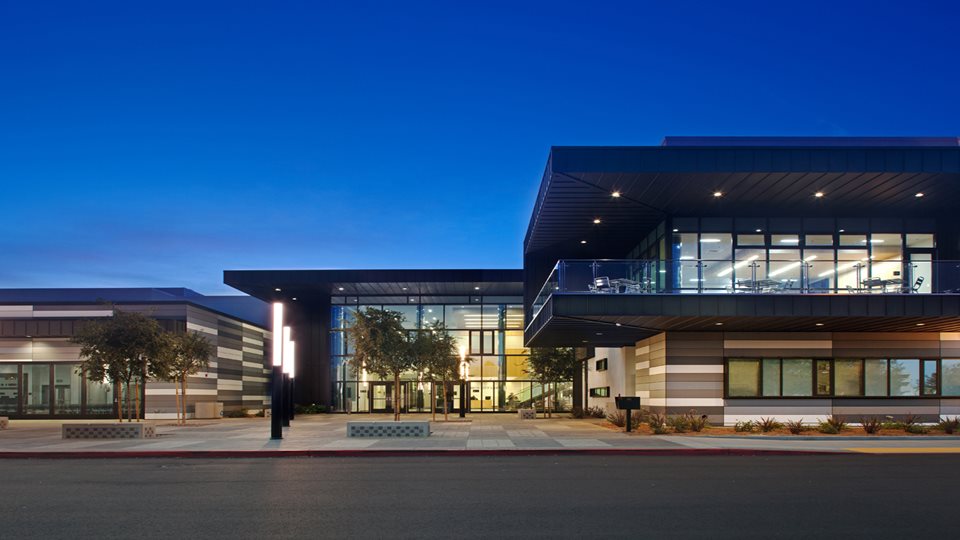
San Diego Community College District - North City Campus
Architect: Joseph Wong Design Associates - Matthew GEAMAN
Surface aspect: ANTHRA-ZINC
Technique: VMZINC Standing seam
Surface in zinc: 1,165 m2 on facade
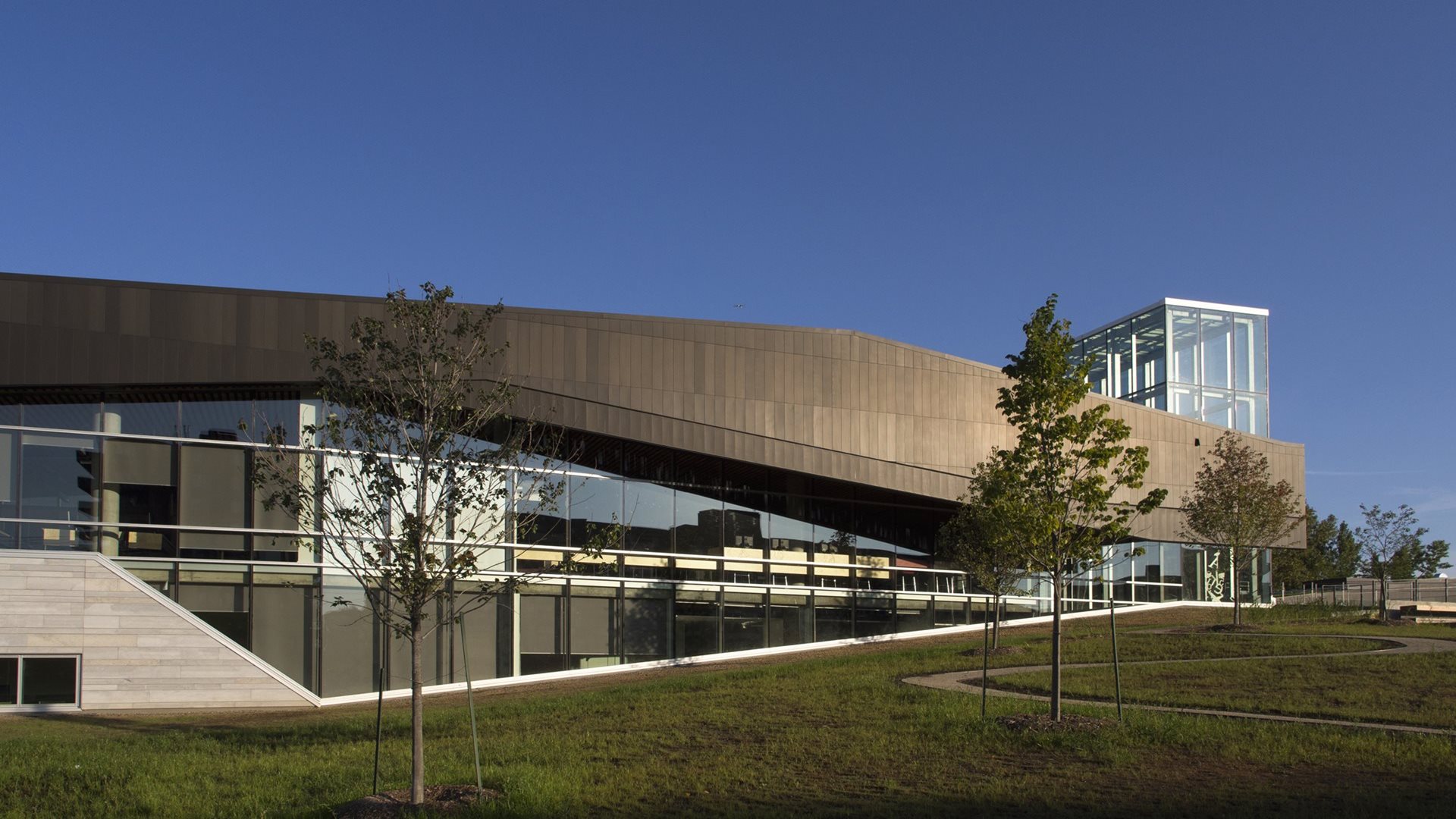
Du Boisé Library
Architect: Cardinal Hardy Labonté Marcil Eric Pelletier - Eric PELLETIER
Surface aspect: ANTHRA-ZINC
Technique: VMZINC Standing seam and VMZINC Interlocking panel
Surface in zinc: 886 m2 on facade
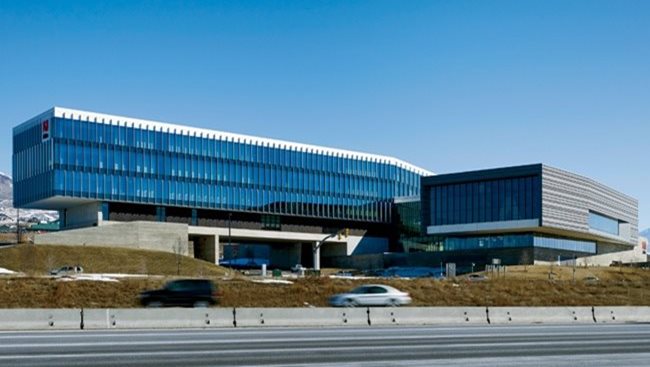
Adjustable Forms Inc
Architect: DLR Group - Nathan CASTEEL
Surface aspect: ANTHRA-ZINC
Technique: VMZINC Sine wave profile and VMZINC Cassettes
Surface in zinc: 567 m2 on facade
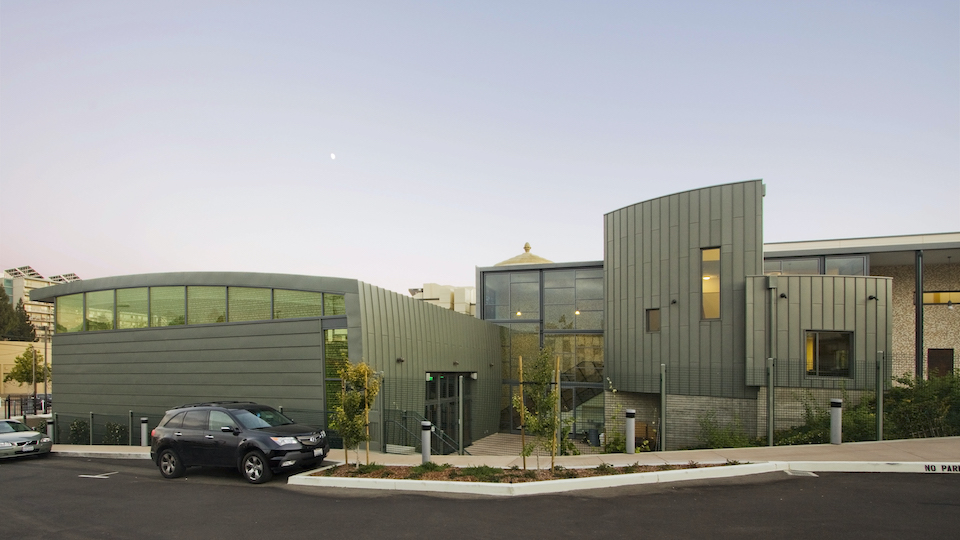
Temple Sinai in Oakland
Architect: Mark Horton Architecture - Mark Horton
Surface aspect: PIGMENTO Green
Technique: VMZINC Standing seam
Surface in zinc: 823 m2 on facade and roofing
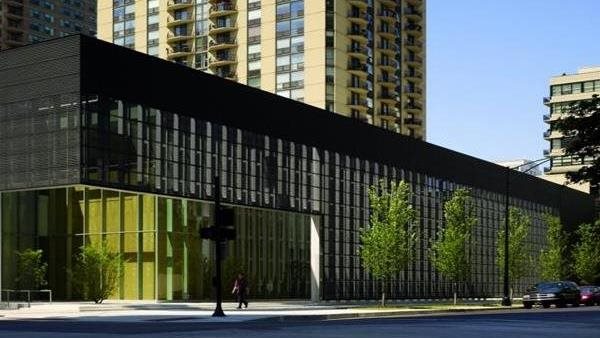
Poetry Foundation
Architect: John Ronan
Surface aspect: ANTHRA-ZINC
Technique: VMZINC Sine wave profile
Surface in zinc: 1896 m2 on facade
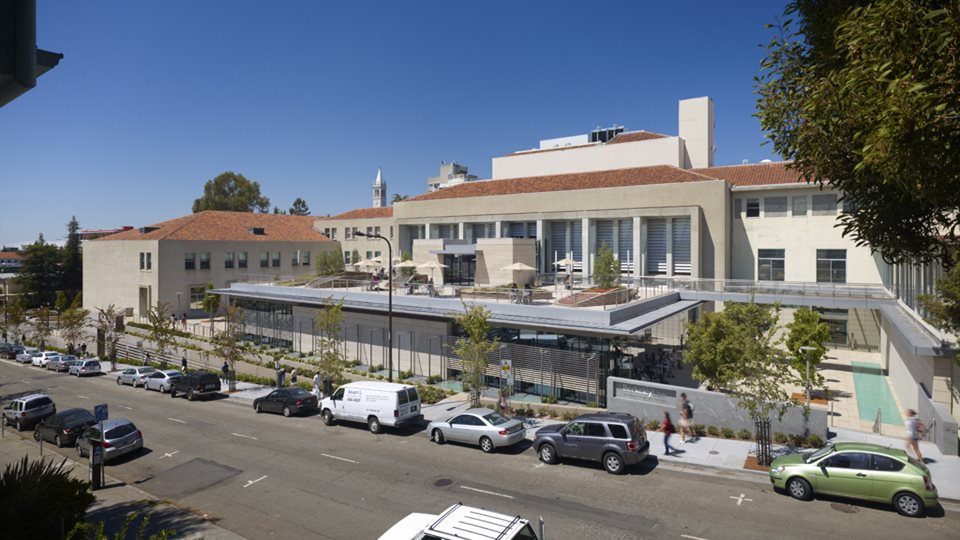
UC Berkeley School of law
Architect: Ratcliff Studio - Joseph Nicola
Surface aspect: QUARTZ-ZINC
`Technique: VMZINC Standing seam and VMZINC Composite
Surface in zinc: 100 m2 on roofing and facade
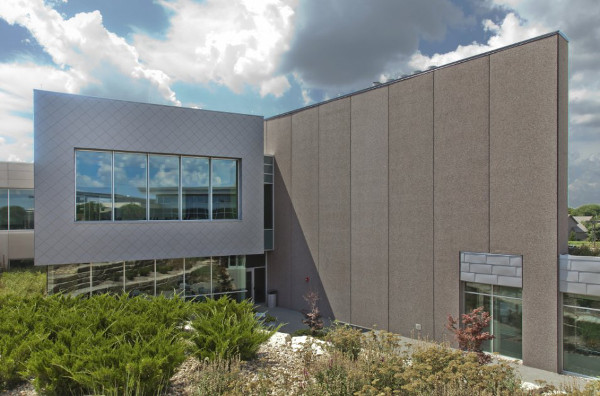
Johnson County Criminalistics Laboratory Mission
Architect: PGAV Architects
Surface aspect: QUARTZ-ZINC
Technique: VMZINC Flat lock panel
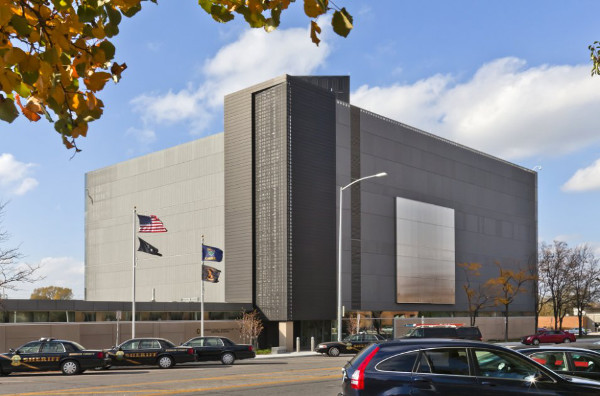
Olathe Adult Detention Center
Architect: Treanor Architects - BNIM
Surface aspect: QUARTZ-ZINC, ANTHRA-ZINC
Technique: VMZINC Interlocking panel
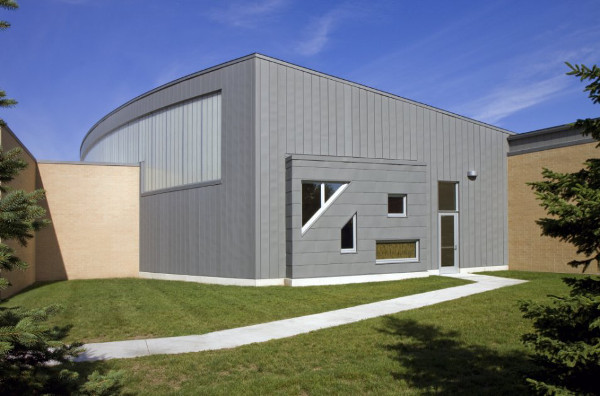
Elk River Library
Surface aspect: QUARTZ-ZINC, ANTHRA-ZINC
Technique: VMZINC Interlocking panel, VMZINC Flat lock panel, VMZINC Structural roof